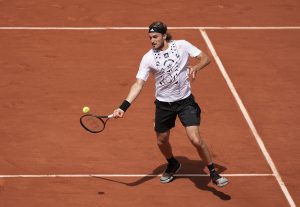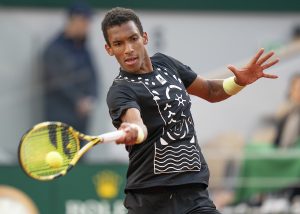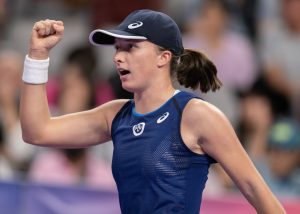The thing about miracles, sporting or otherwise, is that they are almost never repeated, and yet that is exactly what Roger Federer is hoping to achieve this year. Four years on from his own “Miracle in Melbourne”, when he won the Australian Open to claim his first Major title in nearly five years and defeat Rafael Nadal in a Major final for the first time in nearly 10 years, the great Swiss is aiming to win another Grand Slam title in 2021, the year that he will turn 40.
However, given the fact that Federer will not even be present in Melbourne for the first Major of the year, one of the two Grand Slam tournaments that he has the best chance of winning (the other, of course, being Wimbledon), the odds must be overwhelmingly against him.
Nearly half a decade on from Federer’s fifth Australian Open victory in 2017, it is worth remembering just how startling it was. It was his first tournament back after nearly six months out through injury, but instead of being hopelessly rusty and out of practice he instead wowed the world, as he had so often done before.
Not only did he debut a radically remodelled backhand, which had been specifically redesigned during his long absence from the tour to try and combat his great rival Rafael Nadal’s gigantic forehand, but it faced the ultimate stress-test in the final when he faced Nadal.
What followed was arguably Federer’s greatest ever Major victory, or at the very least the greatest single set that he or anyone else has ever played in a Major final, as he came from 3-1 down in the fifth set to win five games in a row and claim the title. Nadal did not falter, let alone choke (he has proved himself virtually incapable of that throughout his own long and glorious career), but for once Federer matched him right at the death, as he had ultimately been unable to at Wimbledon in 2008.
He produced a series of seemingly impossible winners to destroy Nadal’s defences, which had long been thought to be indestructible. The remodelled backhand and the still brilliant forehand produced a two-winged attack that even Nadal, the greatest defensive player in tennis history, could not cope with.
What followed for Federer over the next year was arguably even more miraculous, even if it did not contain another amazing Grand Slam victory over Nadal. Having wisely decided to skip the French Open, he won two of the next three Majors that he competed in – the 2017 Wimbledon and the 2018 Australian Open – as he produced perhaps the greatest tennis of his career, which would make it probably the greatest tennis that anyone (or at least any man) has ever played, as The Guardian and numerous other newspapers, magazines and websites proclaimed.
That year-long run from the Australian Open of 2017 to the Australian Open of 2018 returned Federer right to the top of men’s tennis, as he became the first man to win 20 Majors and even claimed, albeit briefly, the world #1 spot in February 2018.
It was a period of late and great creativity that not only matched or even exceeded other such achievements in sport, such as Pele winning a third World Cup in 1970 12 years after his first World Cup win or Tom Brady winning a sixth Super Bowl after entering his fifth decade, but bore comparison with similarly mature achievements in the arts, such as those of Shakespeare or David Bowie. (Federer’s inherently artistic game has always invited comparisons with other artists, indeed even with the greatest of artists.)
However, all empires fall and all imperial phases eventually end, and so it was with Federer. Over the next 18 months or so – from the start of 2018 to the summer of 2019 – he plummeted back to Earth, at least relatively, after reaching such incredible heights.
He blew a two-set lead against Kevin Anderson in the 2018 Wimbledon quarterfinal and then even more devastatingly let two match-points slip against Novak Djokovic in the 2019 Wimbledon final. The result was a defeat that was arguably even more agonising than that famous 2008 Wimbledon final loss to Nadal, when he never achieved so much as one match-point.
Now, at the start of 2021, it is nearly a year since Federer has played at all. His last appearance in a tournament was at last year’s Australian Open, when he performed heroically to reach the semifinal and even more heroically to take the first set against Novak Djokovic, before eventually, perhaps inevitably, going down in four. And he has not been seen in a tournament since.
In that year, everything – not just tennis – has changed, because of the Covid pandemic. Now, as has often been said, every sportsman and woman faces two opponents: their actual opponent on the court or field; and Covid itself.
At the very least, the demands of testing and quarantine threaten to interrupt their match practice, as all the competitors at this year’s Australian Open are likely to find when they arrive Down Under, and at the very worst it could cause serious illness and consequently an enforced absence from the game, which would be hard enough at any stage but doubly hard at Federer’s advanced age.
Of course, Federer will not play in this year’s Australian Open, meaning that there will be no “Melbourne Miracle” in 2021. He announced his withdrawal over the holiday period, insisting that it was necessary so that he could complete his rehabilitation and then concentrate on the summer swing of Wimbledon, the Olympics and the US Open. (He may not compete at all in Paris, as was the case in 2017 and 2018, and even if he does he will be a distant fourth favourite there behind Nadal, Djokovic and Thiem.)
Of course, the Olympics may not happen, as Dick Pound, the longest-serving member of the International Olympic Committee, reiterated today. And although Wimbledon and the US Open are likely to go ahead, it is almost inevitable that they will do so without many or perhaps even any fans being present.
That, in addition to his age and his recent history of serious injury problems after remaining virtually injury-free for most of his career, could be a further complication for Federer. It has frequently been said that such is the almost universal admiration for Federer around the world that he “never plays away” – that is to say that he almost always enjoys the overwhelming support of the crowd, wherever he plays.
But of course there is unlikely to be any crowd at all this year at the Majors, or at best there will probably be a drastically reduced and socially distanced crowd. For Federer, who has always enjoyed the support of devoted “FedHeds” around the world, that will be a new and unique experience, especially as, unlike almost every other top male or female tennis player, he has not had a chance to become accustomed to playing in front of empty or nearly empty stands over the last year.
So, as Federer approaches his 40th birthday in August this year, after nearly a year off the tour because of injury, it is statistically, mathematically and indeed logically unlikely that he can repeat his almost superhuman efforts of 2017, especially as he is likely to be trying to do so alone rather than being backed by the most enthusiastic – indeed, downright besotted – fans that any tennis player has ever enjoyed the support of.
The best that can be said about his chances of winning yet another Major – to make it 21 Majors in 2021, as Rafael Nadal is likely to do at the French Open in the spring, if not in Melbourne next month – is that if anyone can, Federer can. It would certainly be foolish to write him off completely. However, it would be even more foolish not to say that it is incredibly unlikely, indeed even more unlikely now than it was four years ago.
Main photo:
Embed from Getty Images






